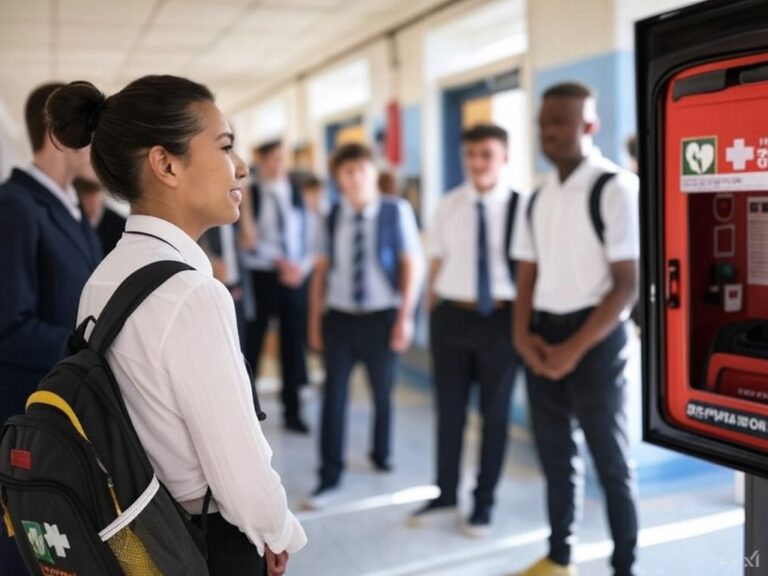
10 Essential Tips for Cardiac Emergency Preparedness in Schools
Introduction:
In the unpredictable landscape of educational environments, the importance of being prepared for cardiac emergencies cannot be overstated. Schools are communities where quick, effective response to medical emergencies can save lives. At Defib Service, we’re not just about maintaining life-saving equipment; we’re committed to empowering schools with the knowledge to act when every second counts. Here’s how you can ensure your school is ready for a cardiac emergency.
1. Educate Your Staff:
Training is key. Ensure that staff members, especially those in administrative roles, teachers, and school nurses, are trained in CPR and AED use. Consider regular refresher courses to keep skills sharp.
2. Know Your AEDs:
Every second counts in a cardiac emergency. Make sure everyone knows where the Automated External Defibrillators (AEDs) are located. Clear signage and regular drills can help in this regard.
3. Regular Maintenance Checks:
AEDs must be in working order when needed. Schedule annual servicing with professionals like those at Defib Service, and check after each use. We offer industry-leading, fully managed services to keep your devices Rescue Ready.
4. Emergency Response Plan:
Develop a clear, accessible emergency response plan that includes cardiac events. This plan should outline roles, communication, and the steps to take from the moment an emergency is recognized.
5. Practice Makes Perfect:
Conduct regular emergency drills focusing on cardiac arrests. This practice not only familiarises staff with the procedure but also highlights any gaps in the plan or equipment readiness.
6. Clear Communication:
Establish a protocol for alerting emergency services and for internal communication during an event. Walkie-talkies or a dedicated emergency phone line can be lifesaving.
7. Placement of AEDs:
Strategically place AEDs where they can be accessed quickly from any part of the school. Consider having one in each major area or building if your school is large.
8. Public Awareness:
Inform students, parents, and visitors about the presence and location of AEDs. Community awareness can lead to more eyes watching out for emergencies and knowing how to respond.
9. Keep Records:
Document all training, drills, and maintenance activities. This not only helps in legal compliance but also in continuously improving your emergency preparedness.
10. Partner with Experts:
For schools, managing emergency equipment can be daunting. By partnering with Defib Service, you ensure professional maintenance, support, and guidance. We offer tailored services that are hassle-free, ensuring your focus remains on education, not equipment.
Conclusion:
Cardiac emergencies are rare but critical events where preparedness can mean the difference between life and death. By implementing these tips, you not only safeguard your school community but also set a standard for emergency readiness. Remember, at Defib Service, we’re here to support you with our expert defibrillator services, ensuring that when the unthinkable happens, you’re not just ready, you’re Rescue Ready.
Call to Action:
- Want to ensure your school’s AEDs are always in top condition? Schedule a service with Defib Service today.
- Interested in learning more about our maintenance plans? Contact us for a personalised consultation.
- Stay updated with emergency preparedness tips and news from the field. Subscribe to our newsletter below.
Disclaimer: While we strive to provide the best advice, always consult with local emergency services and health professionals for tailored advice to your institution’s specific needs.
